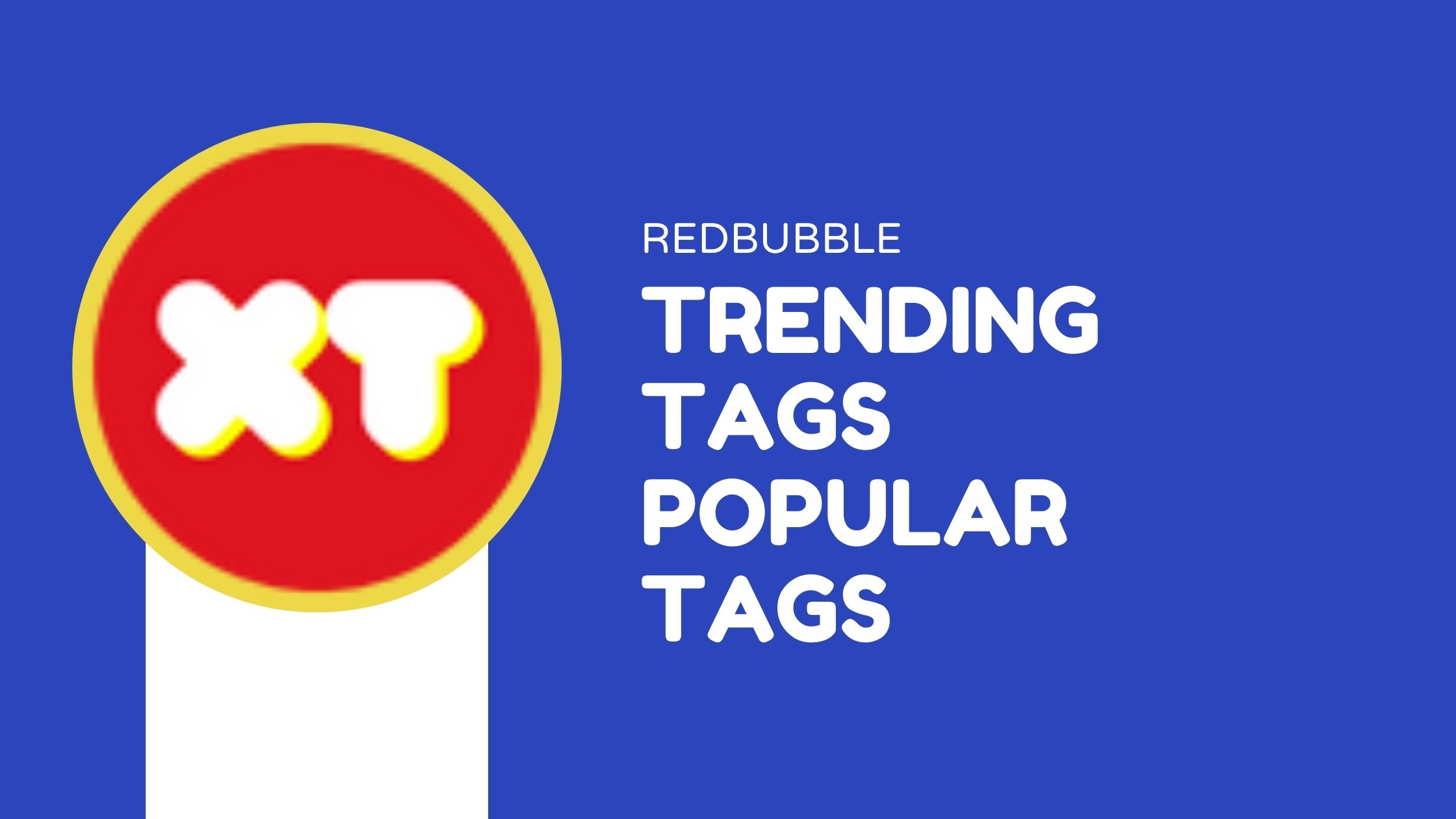Welcome to the vibrant universe of Redbubble, a platform that not only celebrates creativity but also provides artists with a canvas to share their unique designs with the world. In the bustling marketplace of 2024, where every artist aims for visibility and sales, the role of tags has become more crucial than ever. As artists navigate the expansive landscape of Redbubble, understanding the dynamics of trending and popular tags is akin to possessing a key that unlocks the door to enhanced discoverability.
In this article, we’ll delve into the intricacies of tags on Redbubble, exploring why they matter and how staying attuned to trending and popular tags can significantly impact an artist’s success on the platform. So, buckle up as we embark on a journey through the ever-evolving realm of Redbubble tags, where creativity meets strategy in the pursuit of artistic recognition and commercial success.
Why Tags Matter on Redbubble?
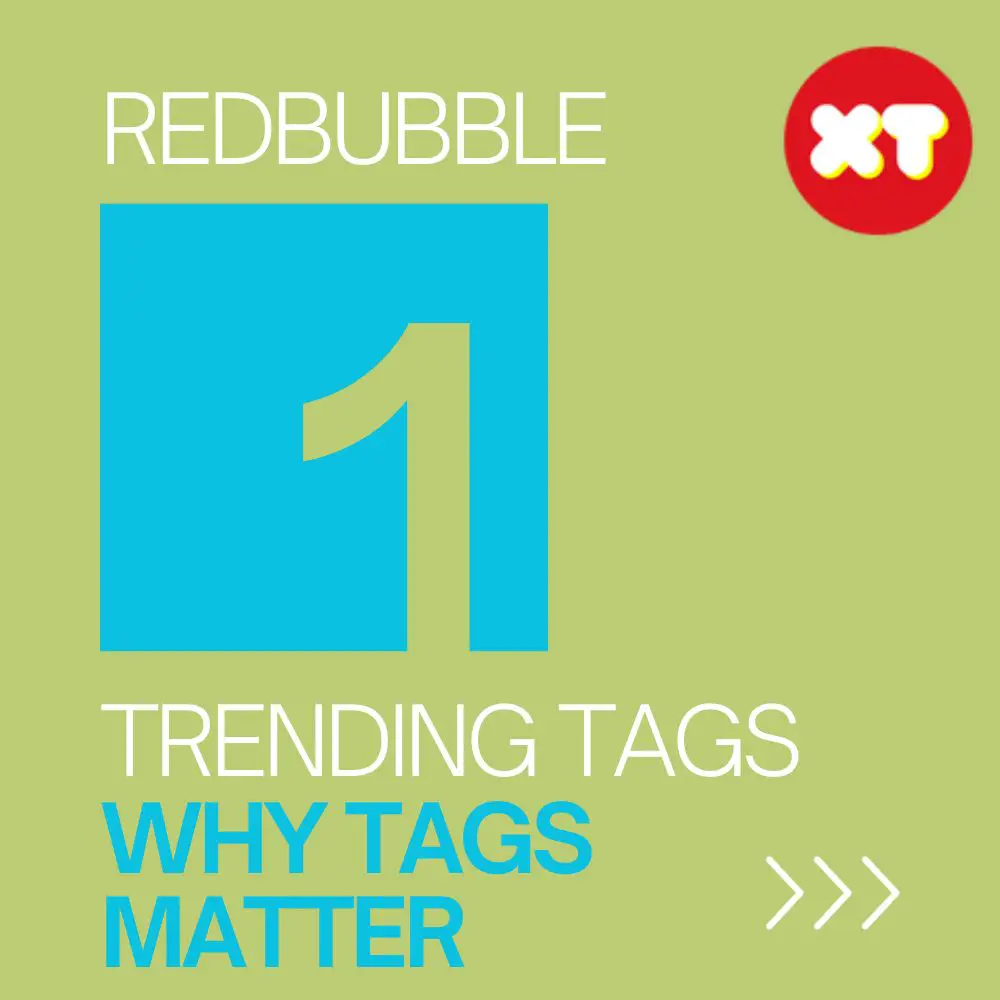
In the vast expanse of Redbubble, where millions of designs compete for attention, the humble tag plays a pivotal role in determining an artist’s visibility. Let’s unravel the significance of tags and why they matter more than ever on Redbubble.
How Tags Enhance Discoverability?
Imagine Redbubble as a bustling city, with each design acting as a storefront vying for attention. Tags, in this scenario, function as the neon signs that guide potential customers to the right establishments. When an artist strategically incorporates relevant tags into their product listings, they essentially make their storefront more visible in the crowded marketplace.
The Redbubble search algorithm relies heavily on tags to connect customers with the designs they’re seeking. By optimizing tags, artists can ensure their creations appear in search results, increasing the likelihood of attracting interested buyers. In essence, tags act as the gateway to discoverability, allowing artists to carve their niche in the competitive landscape.
Impact on Search Engine Ranking within Redbubble
Consider Redbubble as a search engine specifically tailored for art and design. Just as websites aim to rank high on Google, artists aspire to secure a prime position within Redbubble’s search results. Tags are the primary currency for achieving this digital prominence.
When a potential buyer enters a search query, Redbubble’s algorithm scours the vast collection of designs, prioritizing those with relevant and well-optimized tags. Thus, the strategic use of tags not only enhances discoverability but also influences the ranking of an artist’s work.
In the ever-evolving landscape of online marketplaces, mastering the art of tagging is akin to having a front-row seat in the theater of success. As we continue our exploration, we’ll dive deeper into the nuances of trending and popular tags, unraveling the secrets behind their impact on an artist’s journey on Redbubble.
Understanding Trending Tags in 2024
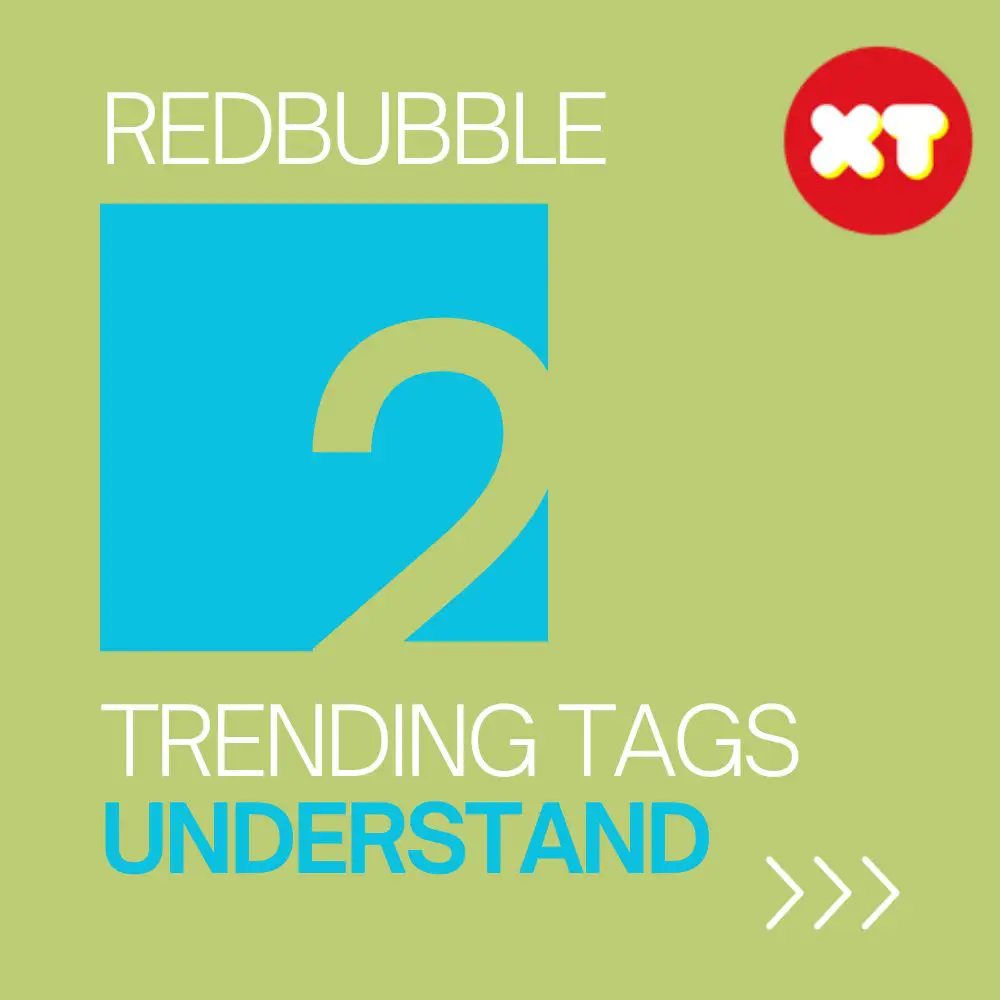
In the dynamic realm of Redbubble, where trends emerge and evolve at a rapid pace, understanding the concept of trending tags is pivotal for artists seeking to stay ahead of the curve. Let’s demystify what it means to ride the wave of trending tags in 2024.
Definition of Trending Tags
Trending tags are like the pulse of Redbubble, reflecting the current interests, themes, and cultural phenomena capturing the attention of users. These tags encapsulate the zeitgeist, representing what’s hot and in-demand at any given moment. Artists who align their creations with these trending tags can tap into a stream of engaged customers actively searching for the latest and most relevant designs.
However, it’s essential to note that the dynamics of trends can vary across different niches and categories. What’s trending in one artistic domain may differ from another, making it crucial for artists to stay attuned to the nuances of their specific genre.
Importance of Staying Updated
In the ever-evolving landscape of online trends, yesterday’s buzz might be today’s news. Staying updated on trending tags is not just a strategy; it’s a necessity. Redbubble’s algorithm is designed to favor recent and relevant content, giving a boost to designs that align with current trends.
Artists can leverage various tools within Redbubble to identify trending tags. The “Explore” feature allows users to discover trending designs, providing valuable insights into the tags associated with popular artworks. Additionally, keeping an eye on social media platforms, industry news, and pop culture can offer a proactive approach to anticipating emerging trends.
As we navigate through the intricacies of Redbubble’s tagging ecosystem, our journey now leads us to explore the realm of popular tags and their significance in capturing the attention of Redbubble’s diverse and discerning audience.
Trending tags on Redbubble
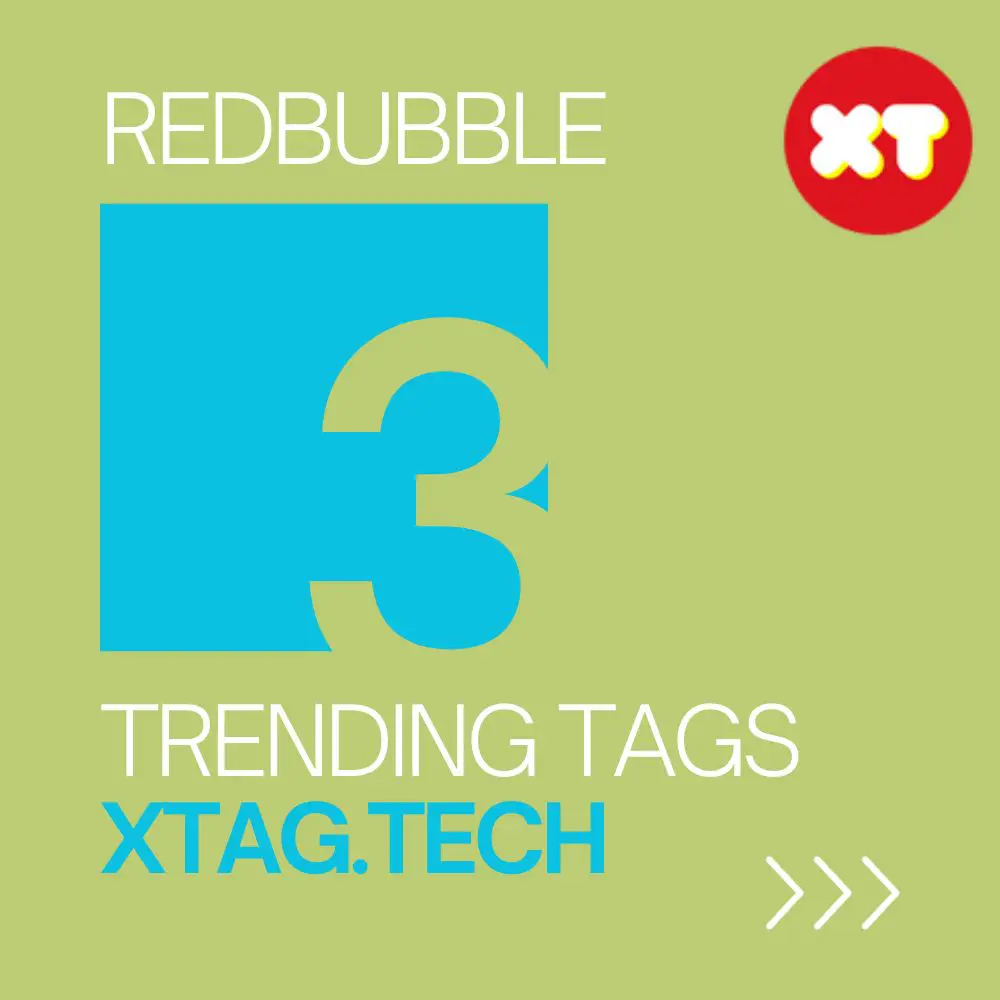
To make sure your designs appear in the trending tags, you need to know how to use them. Creating a list of your favorite tags is a good way to remember what to use and what doesn’t work. You also don’t want to repeat yourself, so make sure that you have a mix of tags. Here are some tips for creating tags that will work well with your artwork.
The first step to becoming a top seller is to know what words people are searching for. The more popular the keyword, the more likely it is to be searched. If a design is popular, it will likely be displayed in the top listings. Another way to increase your sales is to make sure that your products are in the top tier of the popular lists. Once you’ve mastered this, you can then focus on building your sales.
The second step is to understand what your target audience is searching for on Redbubble. By using the Trending Tags on Redbubble, you can target niches with low content and high demand. Depending on your product, you could even create products that are related to these topics. Just make sure that the tags aren’t already taken by your competitors. In this way, you can boost your sales and reach a wider audience.
Trending tags are a great way to discover what products are popular. Trending tags on Redbubble are often used as search queries, so you can easily find the most popular designs on the site by following those trends. Using the trending tags on Redbubble can help you discover new markets for your designs. In addition to being able to find the best products in a particular category, you can also gain insights into the demographic of your target audience.
Redbubble’s popular tags can increase your chances of being seen by your target audience and increasing your sales. The best way to find popular tags is to look at the trends section on Redbubble. Using the trending tags will help you rank higher in search results. The more popular your tags are, the more likely your designs are to be discovered by people looking for similar products. Using popular tags will help you gain more exposure and sell more products.
High-performing tags on Redbubble
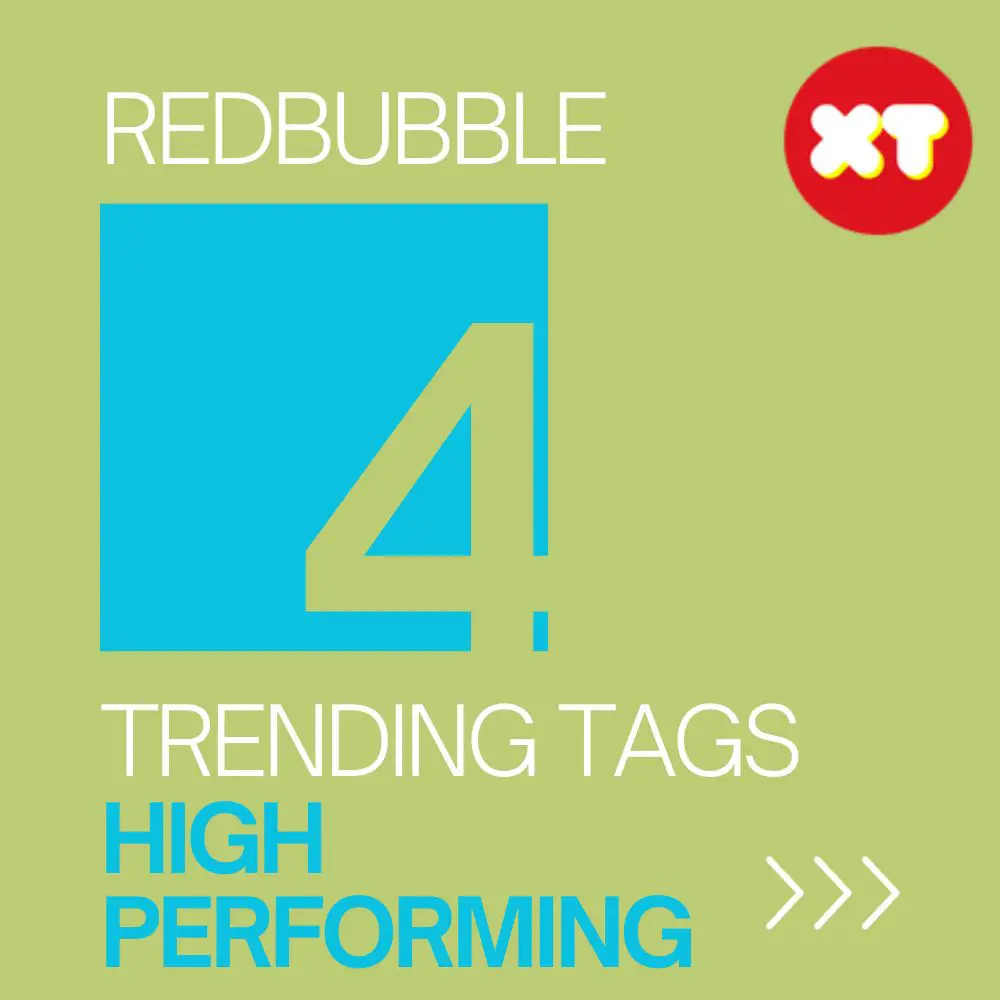
Adding high-performing tags to your Redbubble products will help you be more visible to buyers and boost your sales. Tags can contain up to 15 keywords, but the more relevant ones, the better. Keep in mind that tags shouldn’t be full sentences – rather, they should be related to your product. Redbubble also uses tags to filter products. If your product is in the fashion or beauty category, for example, it will show up in a search for that particular type of merchandise.
When using tags, try to make your tag descriptions as specific as possible. Try not to make your tags too general, because this may make your products appear in irrelevant categories. Also, try to avoid using keywords that are unrelated to your product. In order to avoid confusion, use a selector tool. This will help you to identify which tags are high-performing for your product and will make it easier to find the products that fit your niche.
Creating a collection is another way to get your designs ranked higher. Creating a collection allows you to place several similar designs on a single page. Not only will this help you to rank higher in Google, but it will help to promote yourself on Redbubble. In addition, it will help customers find similar designs.
When using Trending Tags in Redbubble, be sure to research the topic thoroughly. By offering similar designs to your competitors, you can increase sales. For example, if someone searches for funny koala bear shirts, you may want to offer a similar design as yours. Ensure that no other Redbubble designers have copied the design before you upload yours.
If you don’t want to use a tool to generate tags for your Redbubble products, you can search for popular keywords manually. You can use a Redbubble tag generator to generate a list of tags based on your keywords. However, be sure to test the results first. Not all tags are related to your design, and the wrong ones will hurt your rankings. Remember that tools are only as good as the user who uses them.
Low-competition tags on Redbubble
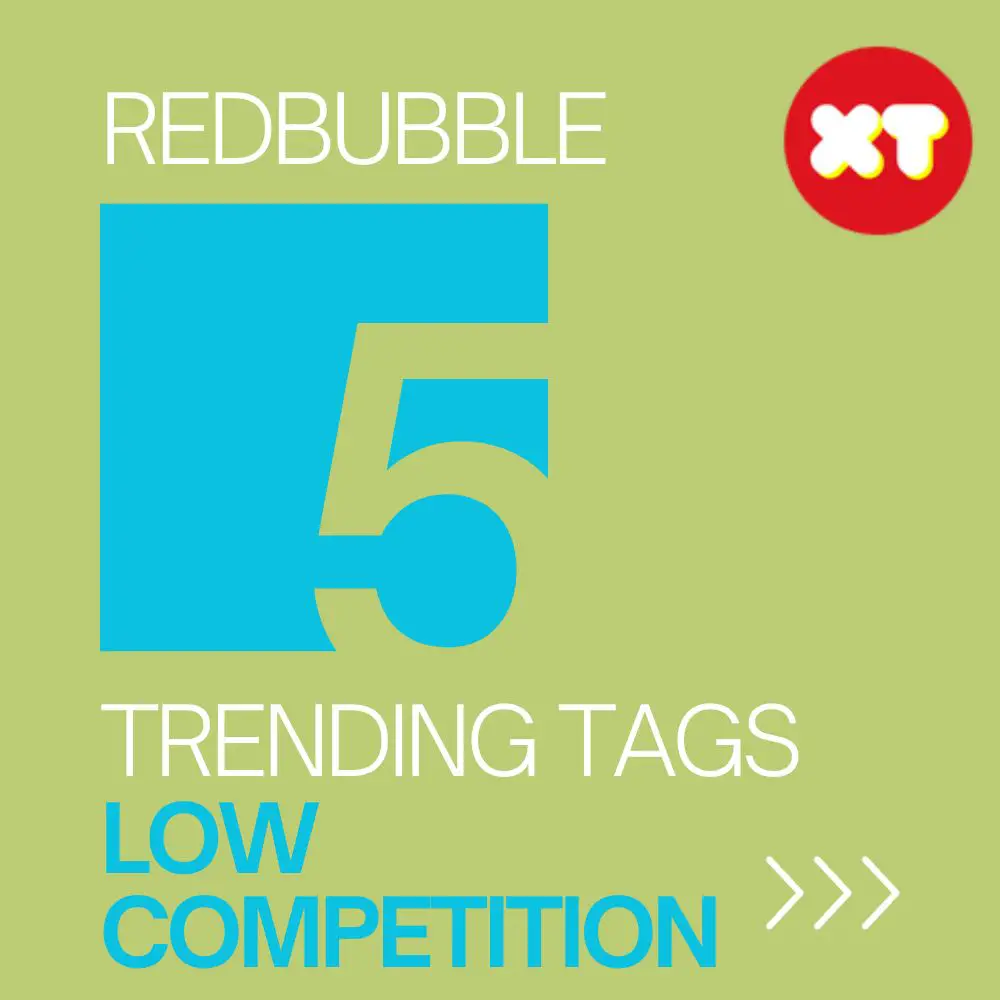
If you’re looking to increase the visibility of your merch and designs, you should consider using low-competition popular tags on Redbub. Keywords with high search volume are great, but you must remember that they have a low competition. Low-competition popular tags are the most effective for increasing your store’s visibility. Here are some useful hints to generate keywords:
First, do some research. Most artists use similar colors, themes, and styles. Keep a list of tags that are effective for your genre. Tags like dreamy, earthy, and neutrals will work over again. However, tags like succulent might not make sense if you are selling art aimed at a specific demographic. Before creating your tags, check out what other people have created for the tags and look for similar titles and designs.
Use the “Tags” format on your videos. Passive Marie uses this format for her Youtube videos and shares a great tag strategy. Using the Tags tool on Redbubble will allow you to see which tags have the most results each week. By looking at the number of results per tag, you can determine whether your niche is worth pursuing. In the meantime, you can use popular tags to promote your products on RedBubble.
Using popular tags on Redbubble will increase the visibility of your merchandize and boost your sales. These popular tags are commonly searched by consumers who are looking for a particular item. Also, they will allow people to quickly find similar products. The popularity of the tag will make your product more visible in search engine results, so make sure you use these popular tags. But beware! The more popular the tag, the more competition there will be.
To maximize sales, use low-competition popular tags. This method is incredibly powerful, but it does require some skill on your part. Once you’ve mastered the basics of tags, you can start snooping through the tags of others’ designs. You can then select the tags you want to use to increase your visibility. If you’re looking for a high-competition popular tag, you might be able to rank well by using it on your own designs.
Customizable options for popular tags
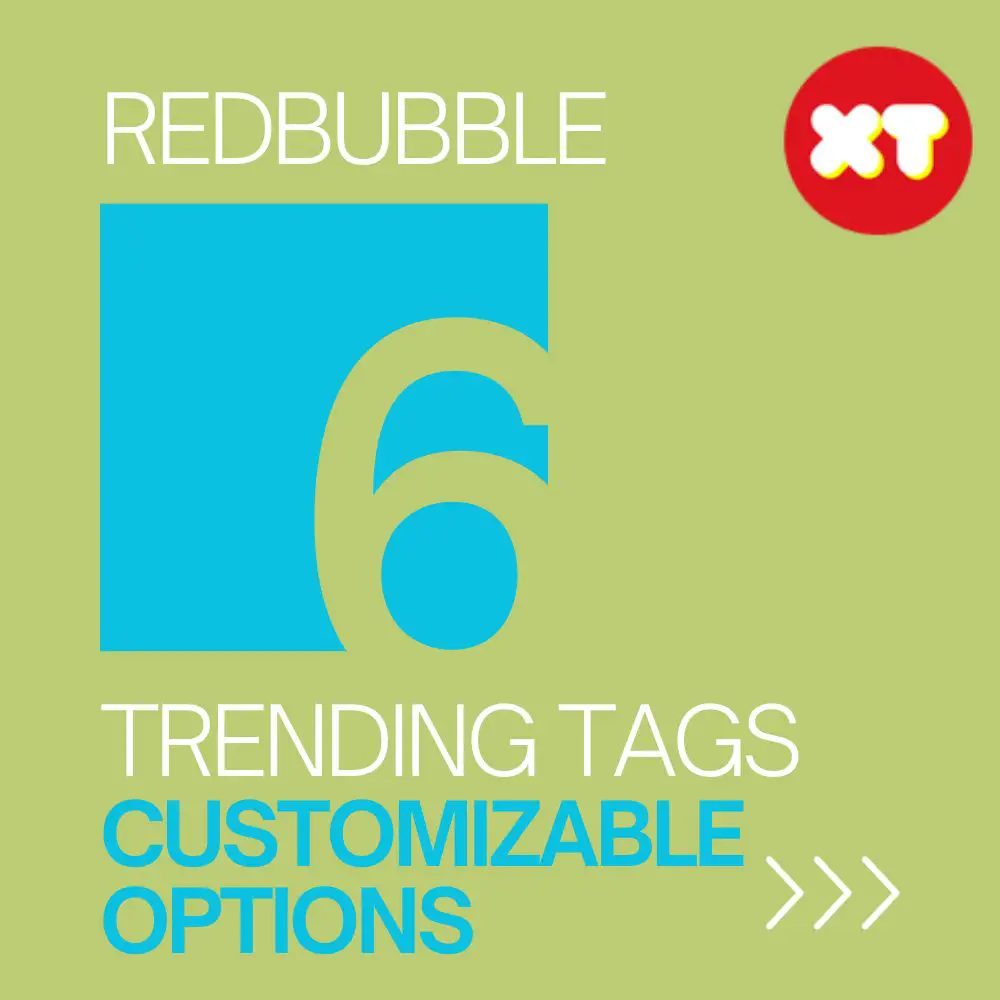
To increase engagement with your redbubble product pages, consider using social media to promote your products. Many sellers use product mockup images to promote their products, but you can increase your visibility by posting your own images. Tags are a great way to get more views, and you can even add hashtags to increase exposure. Pinterest pins also get picked up by some search engines, making it an excellent second storefront for your redbubble art.
Redbubble is a great choice for designers of all styles and media. Its diverse audience is open to anything you can dream up. You can sell your designs on t-shirts, hoodies, scarves, notebooks, stickers, smartphone cases, and duvet covers. You can choose from over 60 product types to sell. There is a product category to suit your tastes.
Popular Tags and Their Significance
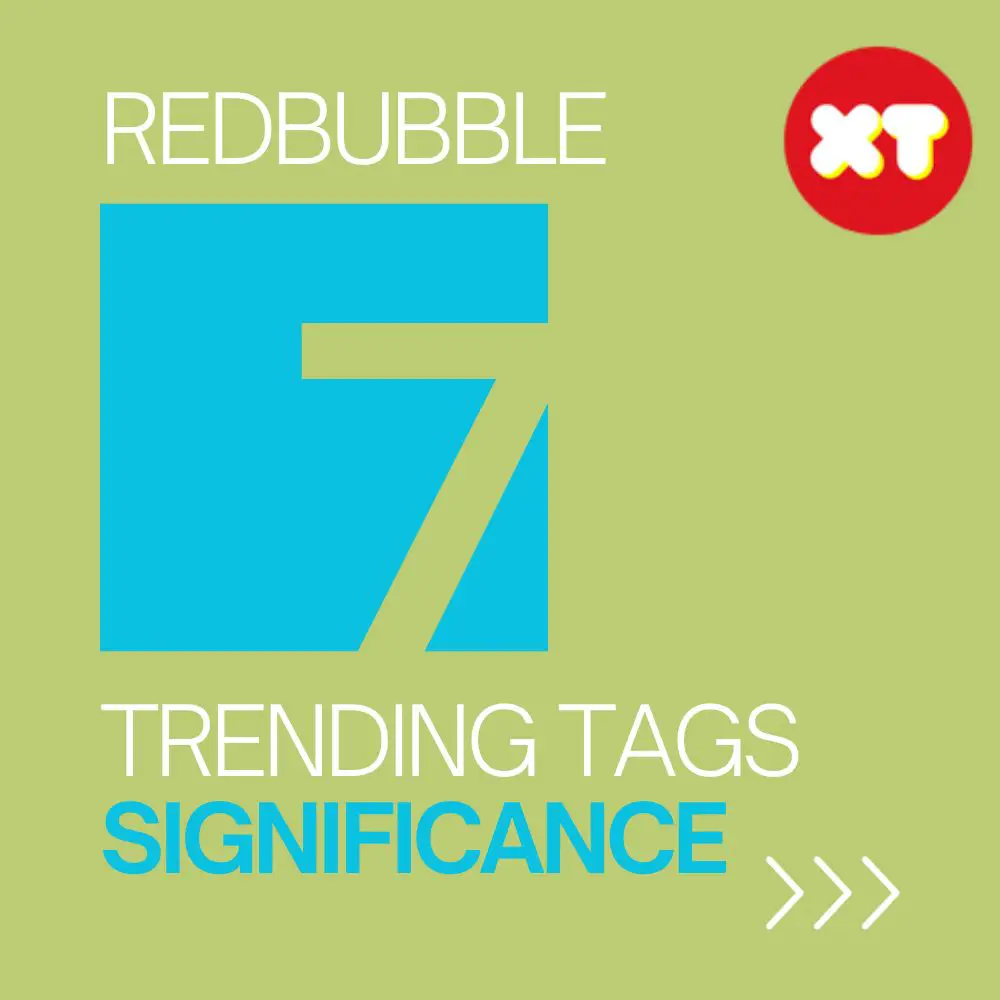
In the bustling marketplace of Redbubble, where diversity thrives, understanding the concept of popular tags is akin to recognizing the ever-shifting currents of consumer preferences. Let’s delve into the world of popular tags and uncover their profound significance for artists aiming to resonate with the vast and discerning Redbubble community.
Explore the Concept of Popular Tags
Popular tags are the seasoned veterans of the Redbubble ecosystem—tried, tested, and proven to attract the attention of a broad audience. Unlike trending tags that capture the zeitgeist of the moment, popular tags have stood the test of time, consistently drawing interest from users over an extended period.
These tags often represent enduring themes, universal concepts, or evergreen topics that maintain relevance across diverse demographics. Think of them as the classics that never go out of style, providing artists with a stable foundation to showcase their creations to a wider audience.
How They Reflect Customer Preferences?
The popularity of certain tags directly correlates with customer preferences and purchasing behaviors. By aligning their designs with popular tags, artists can tap into the existing demand for specific themes, ensuring their creations are visible to a broad spectrum of potential buyers.
Understanding customer preferences goes beyond merely identifying popular tags; it involves deciphering the underlying motivations driving those preferences. Whether it’s nostalgia, humor, or a shared passion for a particular subject, popular tags serve as a bridge between artists and their audience, facilitating a connection that goes beyond the visual appeal of the design.
As artists navigate the landscape of Redbubble, incorporating popular tags becomes a strategic choice that goes beyond trends. It’s about establishing a lasting presence, building a brand that resonates with the diverse tastes and preferences of Redbubble’s global community.
Next on our journey, we’ll explore practical strategies for identifying trending tags on Redbubble and delve into the tools that empower artists to stay ahead in the ever-evolving world of online art and design.
How to Identify Trending Tags on Redbubble?
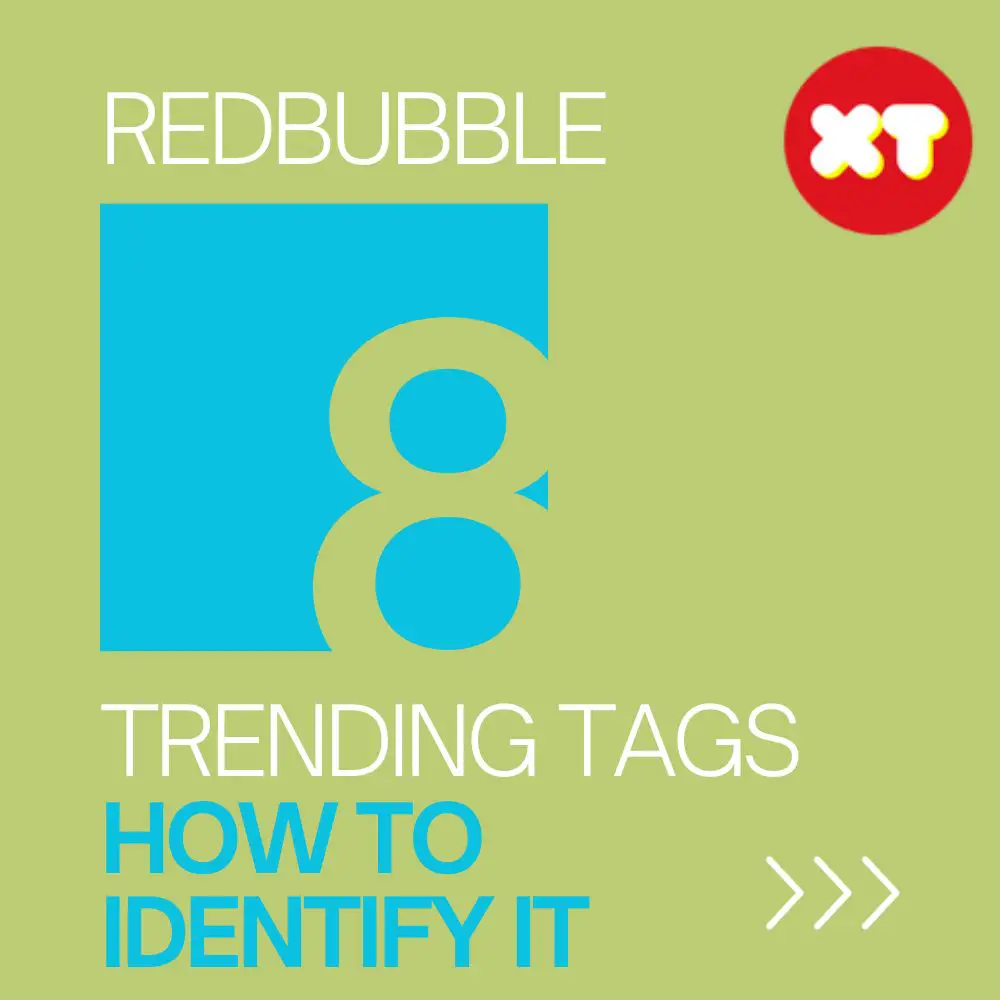
In the ever-dynamic Redbubble environment, where trends emerge and evolve swiftly, staying ahead of the curve requires artists to be adept at identifying trending tags. Let’s delve into practical strategies and tools that empower artists to navigate the landscape of trending tags on Redbubble effectively.
Utilizing Redbubble’s Search and Analytics Features
Redbubble equips artists with powerful built-in tools that facilitate the discovery of trending tags. The platform’s search functionality is not just a means to find designs but a valuable resource for trend identification. Artists can explore popular search queries related to their niche, gaining insights into the tags associated with trending designs.
Additionally, Redbubble’s analytics provide a treasure trove of information. Artists can analyze the performance of their own designs, identifying which tags contribute to higher visibility and engagement. By leveraging this data, artists can adapt their strategy, refining their use of tags to align with current trends.
External Tools for Tag Research
Beyond Redbubble’s native features, external tools can be invaluable for comprehensive tag research. Platforms like Google Trends and social media monitoring tools offer insights into broader cultural trends that may influence tag popularity. Artists can cross-reference these external trends with Redbubble’s specific environment to identify opportunities for alignment.
Exploring online forums, social media groups, and communities related to art and design can also provide valuable qualitative data. Understanding the discussions and preferences within these communities can offer a more nuanced perspective on emerging trends that may not be immediately apparent through quantitative analysis alone.
As we continue our exploration, the next step involves crafting effective strategies for incorporating trending tags into product listings. Join us as we unravel the intricacies of using trending tags strategically, ensuring a harmonious blend of creativity and market relevance on Redbubble.
Strategies for Using Trending Tags
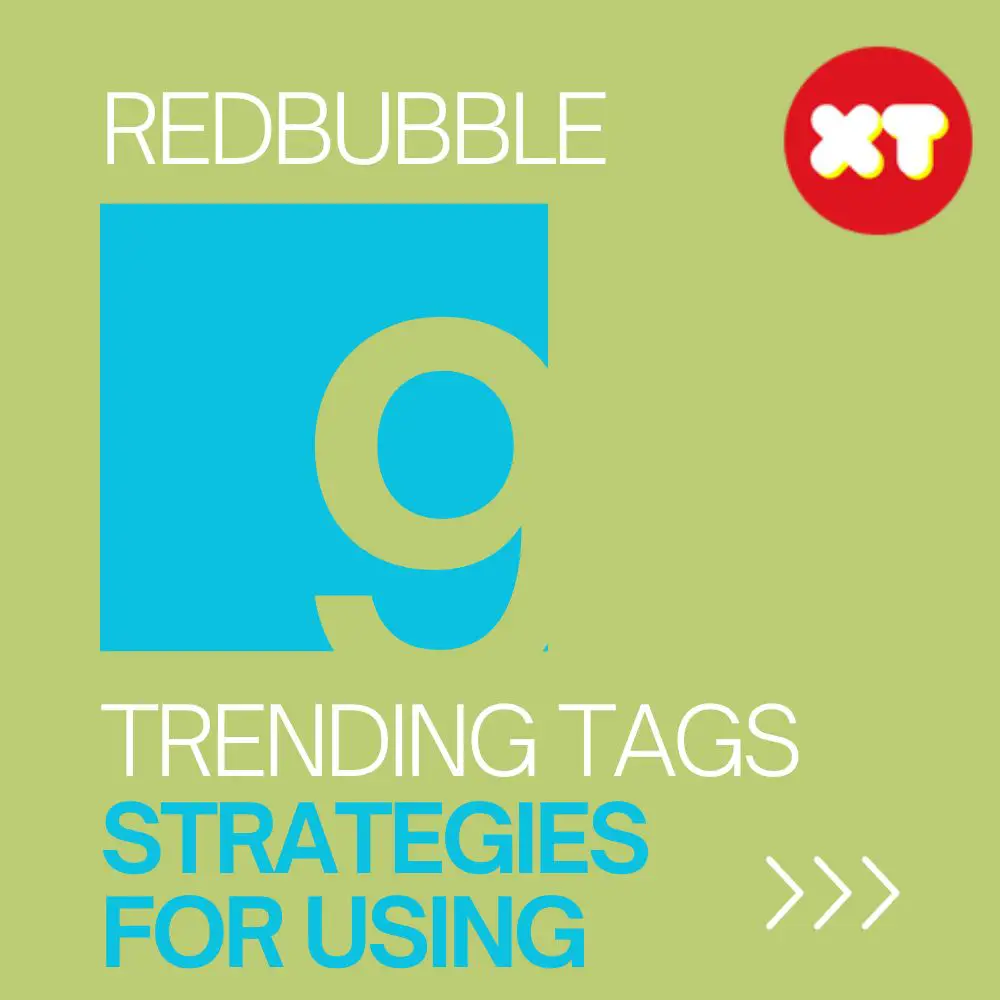
In the dynamic landscape of Redbubble, mastering the art of using trending tags is not just about following the wave; it’s about riding it strategically. Let’s explore actionable strategies that empower artists to integrate trending tags seamlessly into their product listings, maximizing visibility and engagement.
Incorporating Trending Tags in Product Listings
When it comes to leveraging trending tags, the key is seamless integration. Ensure that the tags selected align organically with the theme and visual elements of your design. This not only enhances discoverability but also ensures that your artwork resonates with the expectations set by the trending tag.
Consider the context in which a particular tag is trending. Is it related to a specific event, season, or cultural moment? Tailor your product listings to capture the essence of the trend, creating a cohesive narrative that goes beyond the visual appeal of your design.
Balancing Trending and Niche-Specific Tags
While riding the wave of trending tags can elevate visibility, it’s essential to strike a balance with niche-specific tags. These are tags that cater to a more specific audience within your artistic niche. Balancing trending and niche-specific tags allows you to tap into broad trends while maintaining relevance to your core audience.
Think of trending tags as the gateway to a broader audience and niche-specific tags as the pathway to your dedicated fan base. This dual approach not only enhances discoverability among a wider demographic but also fosters a sense of community and connection with those who share a specific interest.
As we navigate the intersection of creativity and strategy, our next stop involves exploring real-world case studies that showcase the impact of effective tag implementation. Join us as we unravel stories of artists who have successfully ridden the wave of trending tags to elevate their presence on Redbubble.
Case Studies: Successful Tag Implementations
In the diverse and thriving community of Redbubble, the impact of strategic tag implementation is best illustrated through real-world examples. Let’s delve into case studies that showcase how artists have successfully navigated the landscape of trending tags, elevating their visibility and, ultimately, their success on Redbubble.
Case Study 1: “Seasonal Sensation”
- Background: An artist specializing in nature-inspired designs observed a surge in searches related to seasonal themes. Recognizing the opportunity, they incorporated trending seasonal tags into their product listings.
- Result: The artist’s designs not only gained prominence during specific seasons but also became go-to choices for customers seeking nature-themed products year-round. The strategic use of trending tags amplified their visibility, leading to increased sales and a dedicated following.
Case Study 2: “Cultural Connection”
- Background: A digital artist paid close attention to cultural events and phenomena, aligning their designs with trending tags associated with these moments. By tapping into cultural conversations, they created a connection with a broader audience.
- Result: The artist’s designs became catalysts for conversations around cultural trends, leading to widespread sharing on social media. This organic amplification resulted in heightened visibility, increased engagement, and a surge in sales.
Case Study 3: “Humor Hits the Mark”
- Background: An artist specializing in quirky and humorous designs experimented with incorporating trending humorous tags into their product listings. They aimed to capitalize on the universal appeal of humor.
- Result: The artist’s designs became viral sensations, spreading laughter across the Redbubble community. The strategic use of trending humorous tags not only attracted a wide audience but also positioned the artist as a go-to source for lighthearted and amusing creations.
These case studies emphasize the dynamic interplay between creativity and strategic tag implementation. By staying attuned to trends and integrating relevant tags into their listings, these artists not only enhanced discoverability but also fostered a deeper connection with their audience.
As we continue our journey, we’ll explore creative tagging techniques that empower artists to infuse their designs with uniqueness and personality, ensuring a lasting impact in the ever-evolving landscape of Redbubble. Join us as we unravel the art of standing out while riding the wave of trending tags.
Conclusion
In the vast and dynamic world of Redbubble, where artistic expression meets commercial opportunity, the strategic use of trending and popular tags emerges as a key driver of success. From enhancing discoverability to establishing connections with a diverse audience, the journey through Redbubble’s tagging ecosystem is both nuanced and rewarding.
As we conclude our exploration, it’s evident that mastering the art of tagging involves a delicate balance between creativity and strategy. Artists who seamlessly integrate trending tags into their product listings, while maintaining a connection with their niche audience through niche-specific tags, are better positioned for success.
The stories of artists who have navigated the landscape with finesse showcase that the journey is not solely about chasing trends but about understanding and connecting with the ever-evolving Redbubble community. By riding the waves of trends strategically, artists can not only increase visibility but also contribute to the cultural conversations unfolding within the platform.
In the ever-shifting landscape of online art and design, where trends come and go, the ability to adapt, experiment, and stay attuned to the pulse of the community becomes paramount. As you embark on your Redbubble journey, remember that the art of tagging is not a static skill; it’s a dynamic and evolving dance with the ever-changing currents of creativity and commerce.
FAQs (Frequently Asked Questions)
- Q: How often should I update my tags on Redbubble?
- A: Regularly revisit your tags to stay in sync with emerging trends and evolving customer preferences. Consider updates when launching new designs or during significant shifts in your artistic focus.
- Q: Can using only trending tags guarantee success on Redbubble?
- A: While trending tags can boost visibility, a balanced approach that includes niche-specific tags ensures long-term connection with your dedicated audience. It’s about finding the sweet spot between broad trends and niche interests.
- Q: Are there tools beyond Redbubble for tag research?
- A: Yes, external tools like Google Trends and social media monitoring platforms can provide insights into broader cultural trends. Engaging with online communities related to your niche is also valuable for qualitative tag research.
- Q: How do I measure the effectiveness of my tags on Redbubble?
- A: Utilize Redbubble’s analytics to track the performance of your designs. Monitor views, clicks, and sales associated with specific tags. Adjust your strategy based on the data to continually optimize your tag usage.
- Q: Is humor a reliable tag category to explore on Redbubble?
- A: Humorous tags can be powerful, but success depends on the alignment with your artistic style and the current cultural landscape. Experiment, gauge audience response, and refine your approach based on engagement metrics.
As you embark on your Redbubble journey armed with insights into tagging strategies, remember that success is a dynamic pursuit. Stay creative, stay strategic, and enjoy the journey of artistic expression and commercial growth in this ever-evolving online marketplace.
